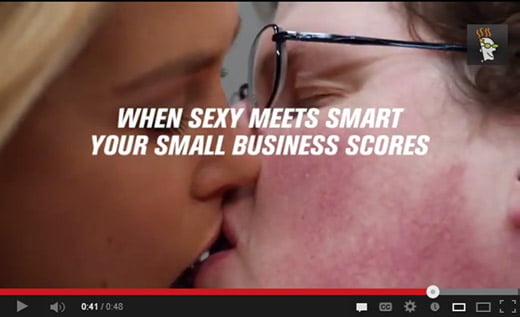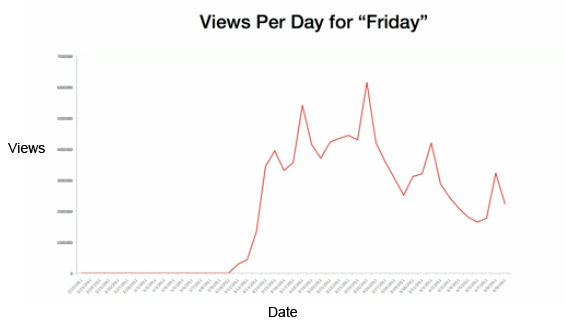Do you ever wonder what it takes to create a viral video?
Do you want your video content to spread to the masses?
While creating a viral video is part science and part art, there are 5 key principles you must follow when creating your own viral video.
If you think creating a viral video is all luck, then stay tuned, because I’m going to show you a simple framework that many companies have used to achieve success.
1. Think like a Street Magician
David Copperfield performs magic in front of thousands of captivated people who hang on his every movement. Each trick combines elements of story-telling with amazing visuals that build anticipation until the final reveal.
One magic trick can last anywhere from 20-40 minutes. And, like all great magicians, Copperfield is as much an actor as he is a magician.
But he has the luxury of an engaged audience. We, in the online video world, are up against many distractions that can pull away our viewers.
Unlike David Copperfield, we must think like a street magician.
We have only a few seconds to capture and maintain the attention of our online passers-by. We must forget about showmanship and hit the audience with quick snippets that keep them wanting more.
That means no logos, no product shots, and definitely no screen casts.
Consider GoDaddy’s Super Bowl ad below. They spent millions of dollars on this ad promoting their website builder.
And yet 1/3 of this ad is on a kiss.
Moreover, this isn’t your typical Hollywood kissing scene. Here we see a nerdy guy with a super model.
While the ad made me somewhat uncomfortable, it was absolutely brilliant.
And what you didn’t see in the ad were screen shots of how easy the website builder is to use.
But will this type of video actually yield results? Mashable reported that the day after the Super Bowl ad ran, GoDaddy posted its highest sales day in history, adding 100,000 customers.

2. Be a Purple Cow
Seth Godin said it best. We don’t notice a brown cow; there are plenty of them.
However, when we see a purple cow, we can’t help but notice, and we can’t help but talk about it.
How often do you come across a purple cow?
Think of the typical video ad for a blender. We usually see blenders mixing the normal fruits and vegetables. Look at the speed and power, the ads tell us.
That is a brown cow.
But, when you watch the “Will it Blend?” videos from Blendtec, you can’t help but watch, and you can’t help but share.
To show the power behind their blenders, Blendtec’s CEO Tom Dickson decided to blend things we normally wouldn’t associate with blenders.
Who in their right mind would break a working iPad in half and then put it in a blender? That’s the power of a purple cow.
3. Use High-Quality Production
As referenced in the 2013 YouTube Marketing Guide, gone are the days when YouTube was exclusively a place for one-hit, user-generated viral videos.
In fact, according to The Wall Street Journal, 9 of the top 10 most viral videos on YouTube in 2012 were created by professional producers.
Back in 2007, when YouTube first published its list of top 10 videos, many were accidental home videos made by amateurs, and they were never designed to have wide-spread appeal, said YouTube Trends Manager, Kevin Allocca.
“There are more and more people who know how to build an audience, how to use YouTube,” Allocca said. “There are companies that spend millions and millions of dollars trying to create these videos.”
In fact, the only video on the 2012 list not professionally produced was the controversial “Facebook Parenting.”
Therefore, if you’re just starting out and don’t have a big budget, it’s okay to start a little scrappy and produce a video on your own. In fact, Wistia has a great video on how to shoot a video with your iPhone.
4. Be Insanely Practical
Another factor in creating a viral video involves providing actionable practical tips. It’s one of the elements conveyed in Jonah Berger’s book, Contagious: Why Things Catch On.
Moz (formerly SEOmoz) put together this fantastic graphic detailing that “Practical Utility” of an article increases the likelihood that it will appear on The New York Times most-emailed list.
Do you want further proof?
Take Wendy Nguyen, a fashion blogger whose YouTube channel has over 425,000 subscribers and over 47 million views.
In her most popular video, she shows viewers 25 ways to wear a scarf in 4.5 minutes.
The video has attracted over 19 million views and continues to drive the bulk of the views on her YouTube channel.
Also, try searching for “how to tie a tie” in YouTube. You’ll find that the top 20 search results have a combined total of over 60 million views.
5. Promote like a Kardashian
There’s a little-known secret for getting your videos to spread. It’s a tactic that’s been around for centuries yet very few people use it when it comes to video content.
It’s called promotion.
With over 50 million views on YouTube, Rebecca Black’s Friday was one of the most popular videos of 2011.
However, for its first several months, it garnered very little interest – stuck in the YouTube grave yard.
It wasn’t until Daniel Tosh covered it on his television show Tosh.0 and a popular video blogger sent a tweet poking fun at the video that it become the sensation we all love to hate (or hate to love).
In his TED Talk, Kevin Allocca shows this graphic on the views of the wildly popular “Friday” video.
And, yes, all of the spikes are on Fridays.
But many of us aren’t creating videos that will be featured on Tosh.0, so how do we marketers go about promoting our work?
Research. Research. Research.
Before creating a video, think about your target audience. Who will watch the video and what will resonate with them?
The very same way we build buyer personas, you should build a viewer persona. Think about all of the web sites that your audience visits and try to reach the Tosh.0 of your target audience.
Once you have the list, reach out to those folks a week before you release the video to give them a sneak peek.
You want to aim for coverage on 2-3 web sites. That’s enough coverage to cause a PR domino effect.
Conclusion
While we may think that creating a viral video is all luck, using the simple framework above will produce the results you are looking for.
From Blendtec to fashion blogger Wendy Nguyen to GoDaddy, there are many businesses applying the principles above to create their own viral videos.
What do you think? Am I missing a principle? What is your favorite viral video? Share your thoughts in the comments below.
Read the full article at https://neilpatel.com/blog/creating-a-viral-video/



Comments
Post a Comment